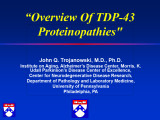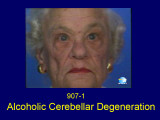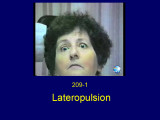Collection of materials relating to neuro-ophthalmology as part of the Neuro-Ophthalmology Virtual Education Library.
NOVEL: https://novel.utah.edu/
TO
- NOVEL717
| Title | Creator | Description | Subject | ||
|---|---|---|---|---|---|
| 326 |
 |
Myasthenia Gravis (Japanese) | NANOS | This is an autoimmune condition where the body's immune system has damaged receptors on your muscles and can result in double vision or drooping lid. | Myasthenia Gravis; Patient Brochure |
| 327 |
 |
Thyroid Eye Disease (Japanese) | NANOS | This is an autoimmune condition where your body's immune system is producing factors that stimulate enlargement of the muscles that move the eye. | Thyroid Eye Disease; Patient Brochure |
| 328 |
 |
Anterior Ischemic Optic Neuropathy (Thai) | NANOS | Loss of blood supply to the optic nerve results in diminished visual acuity. | Anterior Ischemic Optic Neuropathy; AION; Patient Brochure |
| 329 |
 |
Anisocoria (Hungarian) | NANOS | The pupil in the right eye and left eye are not the same size. | Anisocoria; Patient Brochure |
| 330 |
 |
Anisocoria (Hebrew) | NANOS | Pupil in the right eye and left eye are not the same size. | Anisocoria; Patient Brochure |
| 331 |
 |
Anterior Ischemic Optic Neuropathy (Spanish) | NANOS | Loss of blood supply to the optic nerve results in diminished visual acuity. | Anterior Ischemic Optic Neuropathy; Patient Brochure |
| 332 |
 |
Anterior Ischemic Optic Neuropathy (German) | NANOS | Loss of blood supply to the optic nerve results in diminished visual acuity. | Anterior Ischemic Optic Neuropathy; Patient Brochure |
| 333 |
 |
Anterior Ischemic Optic Neuropathy (French) | NANOS | Loss of blood supply to the optic nerve results in diminished visual acuity. | Anterior Ischemic Optic Neuropathy; Patient Brochure |
| 334 |
 |
Anterior Ischemic Optic Neuropathy (Hebrew) | NANOS | Loss of blood supply to the optic nerve results in diminished visual acuity. | Anterior Ischemic Optic Neuropathy; Patient Brochure |
| 335 |
 |
Dry Eye Syndrome (Thai) | NANOS | People with abnormalities of the tear film are diagnosed with "dry eyes", but some patients with "dry eyes" may not feel that their eyes are "dry". Itching, burning, a scratchy sensation, a sensation that there is sand or grit in the eye, or intermittent blurring of the vision can all be symptoms of... | Dry Eye Syndrome; Patient Brochure |
| 336 |
 |
Optic Neuritis (Thai) | NANOS | Your doctor thinks that you have had an episode of optic neuritis. This is the most common cause of sudden visual loss in a young patient. It is often associated with discomfort in or around the eye, particularly with eye movement. | Optic Neuritis; Patient Brochure |
| 337 |
 |
Myasthenia Gravis (Thai) | NANOS | This is an autoimmune condition where the body's immune system has damaged receptors on your muscles and can result in double vision or drooping lid. | Myasthenia Gravis; Patient Brochure |
| 338 |
 |
Blepharospasm (Thai) | NANOS | Uncontrolled blinking, squeezing, and eyelid closure that occurs in both eyes without an apparent environmental cause. | Blepharospasm; Patient Brochure |
| 339 |
 |
Pendular Vertical Oscillations | Shirley H. Wray, MD, PhD, FRCP | Slideshow describing condition. | Absent convergence; Bilateral Horizontal Gaze Palsy Hemorrhage; Bilateral Horizontal Gaze Palsy; Bilateral Lid Nystagmus; Bilateral Sixth Nerve Palsy; Brainstem Infarct; CNS Whipple's Disease; Degenerative Hypertrophy of the Inferior Olivary Nucleus; Facial Palsy; Facial Weakness; Lesion in the Gui... |
| 340 |
 |
Overview of TDP-43 Proteinopathies: Shared Mechanisms Underlying Frontotemporal Lobar Degeneration and Amyotrophic Lateral Sclerosis, The F. E. Bennett Lecture | John Q. Trojanowski, MD, PhD | Slideshow describing condition. | Acquired Ocular Motor Apraxia; Acquired Oculomotor Apraxia; CNS Degeneration; Complete paralysis of voluntary horizontal saccades on command to look left; Frontotemporal Dementia; Impaired pursuit; Inability to make a refixation saccade on command to a target held on the left; Normal voluntary hori... |
| 341 |
 |
Upbeat Nystagmus | Shirley H. Wray, MD, PhD, FRCP | Slideshow describing condition. | Bilateral Lid Nystagmus; Bulbar Palsy; Cerebellar Astrocytoma; Cervical Myelitis; Horizontal Gaze Evoked Nystagmus; Horizontal Saccadic Dysmetria; Opsoclonus; Oscillopsia; Post Infectious Brainstem Encephalitis; Primary Position Upbeat Nystagmus; Saccadic Hypermetria; Saccadic Pursuit; Square Wave ... |
| 342 |
 |
Alexia Without Agraphia | Shirley H. Wray, MD, PhD, FRCP | Slideshow describing condition. | Alexia without Agraphia; Color Anomia; Disconnection Syndrome; Infarct of the Left Visual Cortex and Splenium of the Corpus Callosum; Pure Alexia; Right Homonymous Hemianopia |
| 343 |
 |
Alcoholic Cerebellar Degeneration | Shirley H. Wray, MD, PhD, FRCP | Slideshow describing condition. | Alcoholic Cerebellar Degeneration; Dysmetria; Gait Ataxia; Gaze Evoked Horizontal Nystagmus; Horizontal Gaze Evoked Nystagmus; Horizontal Saccadic Dysmetria; Horizontal Saccadic Hypermetria; Saccadic Pursuit; Square Wave Jerks |
| 344 |
 |
Lateropulsion | Shirley H. Wray, MD, PhD, FRCP | Slideshow describing condition. | Deviation of the Eyes Under Closed Lids; Dorsolateral Medullary Infarction; Lateropulsion; Medulla Infarct |
| 345 |
 |
Clivus Chordoma | Shirley H. Wray, MD, PhD, FRCP | Slideshow describing condition. | Abduction Weakness; Clivus Chordoma; Esotropia; Sixth Nerve Palsy |
| 346 |
 |
Optic Neuritis (Japanese) | NANOS | Your doctor thinks that you have had an episode of optic neuritis. This is the most common cause of sudden visual loss in a young patient. It is often associated with discomfort in or around the eye, particularly with eye movement. | Optic Neuritis; Patient Brochure |
| 347 |
 |
Optic Disc Drusen (Japanese) | NANOS | Optic disc drusen are abnormal deposits of protein-like material in the optic disc - the front part of the optic nerve. | Optic Disc Drusen; Patient Brochure |
| 348 |
 |
Optic Disc Drusen (Spanish) | NANOS | Optic disc drusen are abnormal deposits of protein-like material in the optic disc - the front part of the optic nerve. | Optic Disc Drusen; Patient Brochure |
| 349 |
 |
Multiple Myeloma (PowerPoint) | AAO/NANOS - American Academy of Ophthalmology / North American Neuro-Ophthalmology Society | This 48-year-old female was seen in May 1996 with a history of 2 months of diplopia from a right abducens palsy. This was due to the recurrence of myeloma that had initially been diagnosed and treated with radiation and chemotherapy 9 years before and required further therapy, including bone marrow ... | Multiple Myeloma |
| 350 |
 |
Migraine (Thai) | NANOS | Headache on one or both sides of the brain, and may include symptoms of nausea, vomiting, and sensitivity to light. | Migraine; Patient Brochure |
